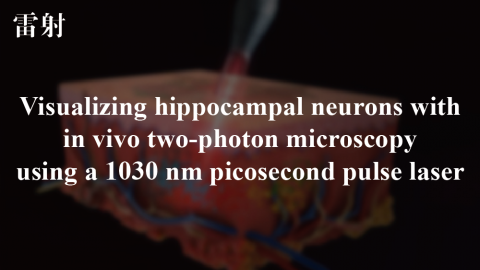
- 3317人
- 分享收藏
Visualizing hippocampal neurons with in vivo two-photon microscopy using a 1030 nm picosecond pulse
简介
【 文献重点摘要 】
In vivo two-photon microscopy has revealed vital information on neural activity for brain function, even in light of its limitation in imaging events at depths greater than several hundred micrometers from the brain surface. We developed a novel semiconductor-laser-based light source with a wavelength of 1030 nm that can generate pulses of 5-picosecond duration with 2-W output power, and a 20-MHz repetition rate. We also developed a system to secure the head of the mouse under an upright microscope stage that has a horizontal adjustment mechanism. We examined the penetration depth while imaging the H-Line mouse brain and demonstrated that our newly developed laser successfully images not only cortex pyramidal neurons spreading to all cortex layers at a superior signal-to-background ratio, but also images hippocampal CA1 neurons in a young adult mouse.
在体内,双光子显微镜已经揭示了神经活动对大脑功能的重要信息,即使考虑到它在距离大脑表面数百微米以上的深度的成像事件方面的限制。作者研制了一种基于半导体激光器的新型光源,波长为1030 nm,输出功率为2W,重复频率为20 MHz,脉冲宽度为5皮秒。作者还开发了一种系统,将鼠标头部固定在具有水平调节机构的直立显微镜工作台下。作者检测了H线小鼠大脑成像时的穿透深度,并证明作者新开发的激光不仅成功地成像了以高信号背景比扩散到所有皮质层的皮质锥体神经元,而且还成功地成像了年轻成年小鼠的海马CA1神经元。



